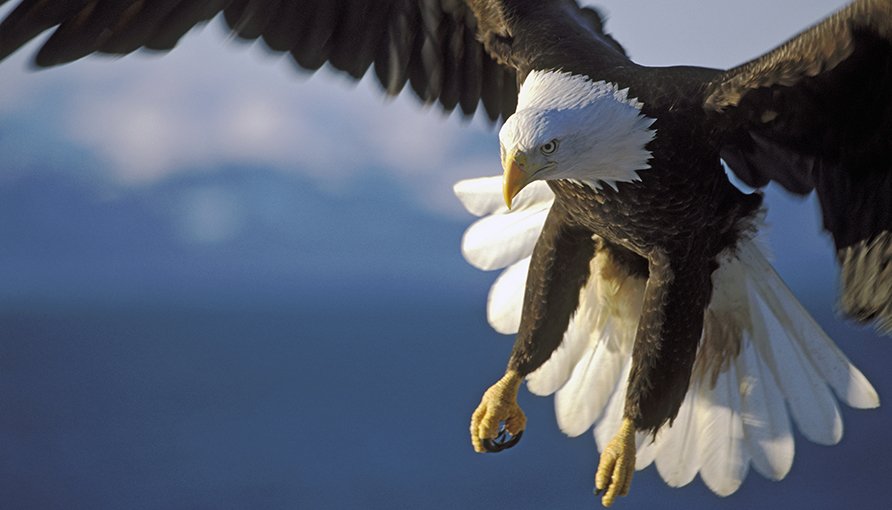For More Information
Jewett, SG, Taylor, WP, Shaw, WT, & Aldrich, JW. 1953. Birds of Washington State. Seattle: University of Washington Press. Pp. 176-178.
Bald Eagle
Haliaeetus leucocephalus

The iconic bald eagle, with white head and tail feathers, is an adult. Subadults are mostly brown, gradually developing adult plumage within 4-6 years. Females are slightly larger than males, and subadults slightly larger than adults. Bald Eagles are scavengers of dead animals, and they also commonly steal fish from Ospreys. But they are also excellent hunters of American Coots (Fulica americana), other waterfowl, and fish. Eagles may patrol bodies of water on the wing, but they prefer to search the water from a high perch.
Urban History
In 1953, the Bald Eagle in Washington State was described as a “common permanent resident on the west side of the Cascades, frequenting the
To say that eagles have adapted to urban living is an understatement. Compared to the first nest high up a tall tree inside a relatively tranquil park, more recent eagle nests have included back yards, sometimes even next to a house under construction.
The first recorded nest in Seattle was in 1980 in Seward Park. The second nest was found seven years later, in Discovery Park. As of 2018, about 12 active territories are known.
Bald Eagles in Seattle are considered year-round (nonmigratory) residents. They become scarce in the fall but some are still seen in the winter.
- August-October: Most eagles leave to feast on spawned-out salmon carcasses along northern rivers.
- October: Birds of breeding age (>4 years) may return to their territories and start nest building
- February: Courtship and nest building pick up
- Early April: Most eagles are on eggs (typically two), incubated by both parents for 35 days.
- May: Young hatch. The 3-ounce nestlings are fed, mostly by the female, for the first 5 weeks, then start feeding themselves.
- Late July-August: The young, now 10-12 pounds, take flight, remaining on their parents’ territory for another month before heading north on their own.
Subadults (4-6 years old) are nomadic. Those that find enough food and stay out of trouble (aren’t injured or killed) gradually gain experience. At sexual maturity, adult eagles look for a mate. New pairs usually form later in spring than established pairs do, and they are less experienced with nest construction.
In Seattle,
Video: Martin Mueller







